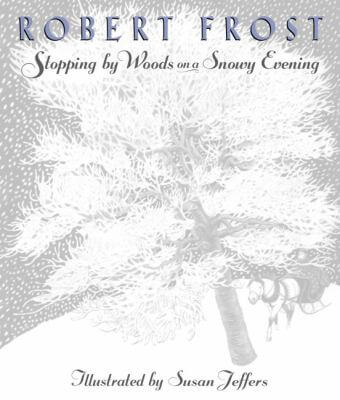
Welcome to the third and final installment of my series on poetry. We started our exploration way, way back in 1794, when words like “thy” were in everyday use. In this post, we’ll look at two poems that are much more recent (although they are not from the 21st century.)
Both poems touch on nature and how people observe it, how we sometimes try to capture it or own it. What beauty can we see by looking at nature, and is it changed by our observation? What happens when we take it out of its context and imprison it?
Click on the title of each poem to read the whole thing.
And miles to go before I sleep,And miles to go before I sleep.
Stopping by Woods on a Snowy Evening by Robert Frost (1923)
This poem invokes stillness and quiet in the image of a man pausing to watch the falling snow. Its beauty is in its simplicity, its detailed description of a brief moment. Our narrator has things to do, but for now there is only the snow, the lake, and a horse gently shaking his harness. What I really love about this poem, however, is the ending. The repetition of the last line gives it power and significance. This pause to view the snow was only a brief respite in a long journey. There is more story unspoken than spoken here.
Note also that the land observed by our narrator belongs to someone (“Whose woods these are, I think I know.”) It is a lovely scene, but not entirely removed from human touch.
The caged bird singswith a fearful trillof things unknownbut longed for still
Caged Bird by Maya Angelou (1969)
This poem contrasts two birds, one free and one caged. The free bird follows the breeze, thinking of fat worms and claiming the sky as its own. The caged bird cannot fly, so it sings instead. What it sings of is freedom. The free bird seems capricious, carefree, powerful. Does it appreciate its liberty? It’s easy to imagine that the caged bird places much more value on freedom, because it knows what it means to be imprisoned.
There is no mention of humans in this poem, but it goes without saying that we are the ones who caged that bird. Interesting that the free bird thinks of itself as owning the sky. One bird is owned, the other an owner. Yet does the bird truly own the sky? Of course not. And does the unnamed land owner in the Robert Frost poem really own the woods? If you ask another human, probably yes. If you ask a bird, perhaps not.
This concludes my three part series on poetry. I had a lot of fun analyzing these poems and thinking about what they meant to me. You may have different ideas about them, so please do share in the comments.
Continue your poetry journey
Read the works of Maya AngelouMegan is a Children’s Library Assistant at CLP – East Liberty. When she isn’t reading fantasy, magical realism and/or pretty much any children’s book, she enjoys gaming, watching movies and writing fiction, some of which has been published.
